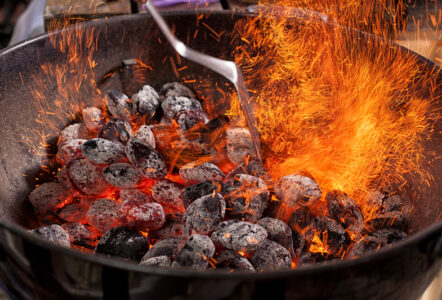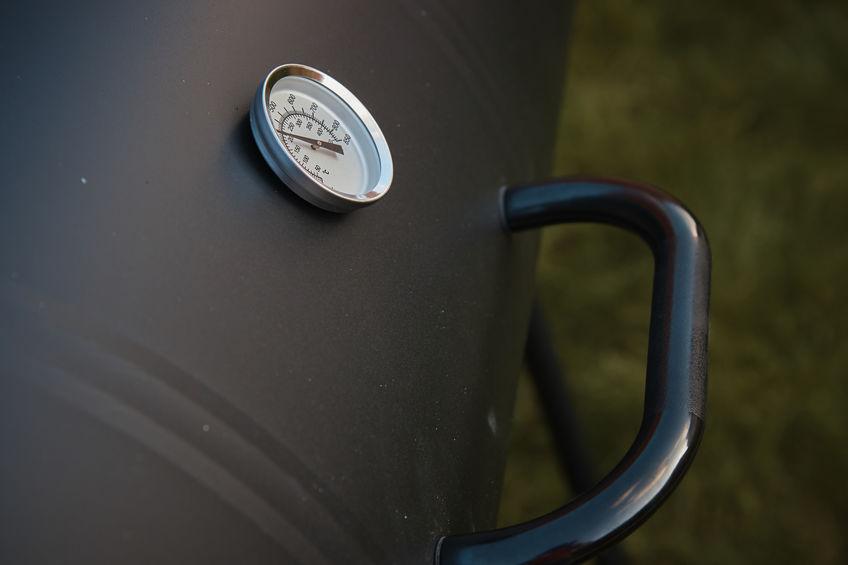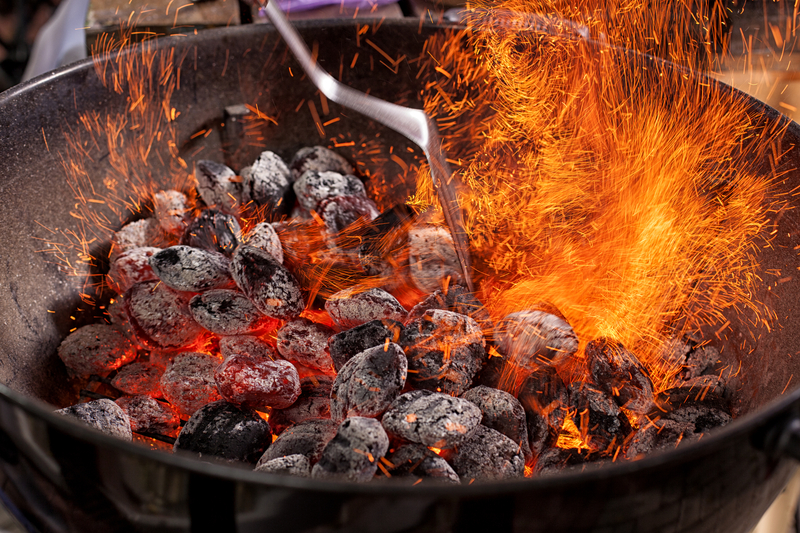
Choosing between a kettle grill and a barrel grill can be a critical decision for those who enjoy outdoor cooking.
The kettle grill, known for its compact design and efficient heat circulation, is an excellent choice for those who enjoy grilling with charcoal.
It’s versatile and well-suited for direct and indirect grilling, making it a favorite for many enthusiasts.
In contrast, the barrel grill offers a larger cooking surface, ideal for those who entertain larger groups or need to cook more food at once.
It provides the space and capability for low and slow cooking, a style perfect for smoky, tender barbecues.
If space and the ability to cook for many people are priorities, the barrel grill stands out as the better option.
Both grill types have their unique benefits, and the best choice often depends on individual grilling preferences.
Enthusiasts focused on versatility and efficiency may lean toward the kettle grill, whereas those prioritizing capacity and smoke flavor might prefer the barrel grill.
Exploring these options helps uncover which fits personal or family grilling needs best.
History and Design Evolution

Kettle grills emerged as an innovative solution for charcoal grilling, while barrel grills embraced a larger, versatile approach.
Both designs have distinct origins and have evolved to meet the needs of outdoor cooking enthusiasts.
Origin of Kettle Grills
The kettle grill originated in the early 1950s when George Stephen, a worker at Weber Brothers Metal Works, sought a better way to grill with charcoal.
Frustrated with open grate systems, he used a metal buoy, cutting it in half to create a rounded lid and fire bowl.
This design allowed for even heat distribution. It also improved temperature control.
The kettle grill’s compact, spherical shape became an iconic design for charcoal grilling, making it accessible to a wide audience.
Weber, through this innovation, popularized the concept of portable, efficient grills.
Development of Barrel Grills
Barrel grills trace their roots to modified oil drums, gaining popularity during the mid-20th century.
They provided more cooking space and were initially used for community events and feeding large gatherings.
The cylindrical design allowed for multiple cooking methods, from smoking to direct grilling.
The introduction of adjustable grates and lids improved functionality.
Unlike kettles, barrel grills often feature more robust construction, catering to those needing a larger grilling capacity.
Over time, manufacturers expanded on this design, incorporating features like side shelves and improved airflow systems, cementing their place in the outdoor cooking landscape.
Comparative Analysis
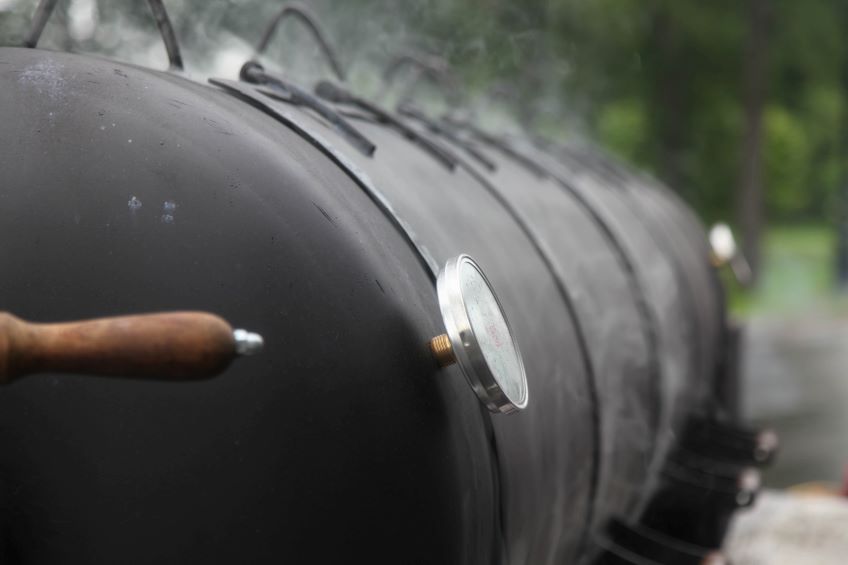
When deciding between a kettle grill and a barrel grill, important factors include temperature control, flavor enhancement, and material durability.
Each grill type offers distinct advantages that appeal to different cooking styles and taste preferences.
Temperature Control and Fuel Efficiency
Kettle grills are known for their excellent temperature control, largely due to their design.
The circular shape promotes even heat distribution, and typically, dual air vents allow for precise adjustments.
This makes them especially fuel-efficient when using lump charcoal.
In contrast, barrel grills often feature larger cooking surfaces, which can make maintaining consistent heat more challenging.
They may consume more fuel but can excel at cooking for larger groups.
With careful management, they can achieve steady temperatures for long periods.
Flavor and Cooking Methods
Kettle grills can achieve a deep smokey flavor when using wood chips or chunks, such as hickory.
They are ideal for those who prefer traditional grilling.
The ability to sear meats beautifully with direct heat is a strong point.
Barrel grills offer enhanced versatility.
Their larger size accommodates smoking, slow cooking, and even baking.
This makes them suitable for those seeking a wider range of cooking methods.
The ability to adjust heat zones enhances flavor outcomes for different foods.
Material and Heat Retention
Kettle grills are often made using materials like porcelain-enameled steel or cast aluminum.
These materials offer durability and reliable heat retention.
This construction supports even cooking and retains heat efficiently, making it a favorable option for consistent grilling.
Barrel grills tend to utilize heavier materials, such as stainless steel or cast iron.
This contributes to excellent heat retention but at the cost of added weight.
The robust build supports longevity, making barrel grills a durable choice for frequent use.
The material differences also significantly impact heat distribution and cooking performance.
Practical Considerations
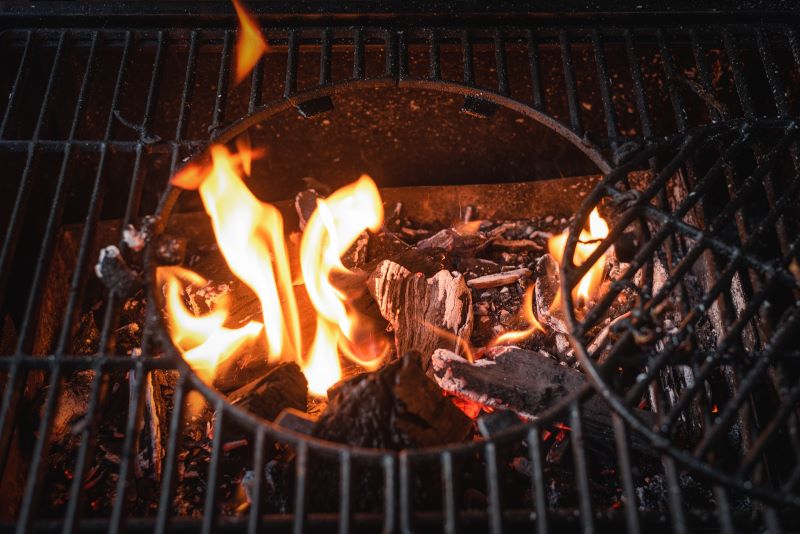
When choosing between a kettle grill and a barrel grill, several practical considerations emerge.
These include specific grill features, ease of use and maintenance factors, as well as cost and overall value.
Understanding these elements helps in making an informed decision.
Grill Features
Kettle grills are typically known for their compact design and portability, making them ideal for small spaces or outings.
They often feature a domed lid, which aids in heat retention and provides even cooking.
Built-in thermometers are common, assisting in temperature monitoring for precise grilling.
Barrel grills, on the other hand, boast a larger cooking area, suitable for bigger gatherings.
Their design facilitates both direct and indirect cooking methods.
Many models include a side firebox, allowing for smoking versatility.
The sturdy construction adds durability but can make them less portable compared to kettle grills.
Ease of Use and Maintenance
Kettle grills are generally easy to use, with simple temperature controls and quick setup.
The removable ash tray is a notable feature that simplifies cleaning, reducing the hassle of maintenance.
These grills often require less charcoal, contributing to their ease of operation.
Barrel grills, with their larger size and options, may require more attention to temperature control, especially for smoking.
They may have additional features like shelves or hooks for utensils, enhancing usability.
Cleaning can be more intensive due to their size, but many come with handy cleanup features, such as slide-out ash pans.
Cost and Value
In terms of cost, kettle grills are usually more affordable, offering great value for those on a budget.
Their efficiency in charcoal usage and compact size make them cost-effective over time.
Barrel grills, while more expensive initially, offer greater versatility with their extensive cooking options.
They present excellent value for those who regularly entertain larger groups or enjoy diverse cooking styles.
The investment in a barrel grill is justified by its durability and capability to tackle a variety of grilling tasks.
Culinary Capabilities
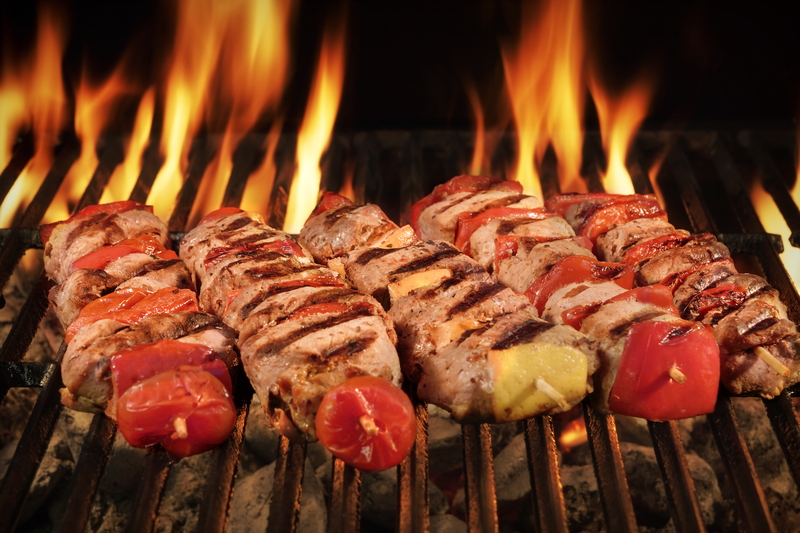
Kettle and barrel grills offer distinct cooking options through various heating techniques, each enhancing the taste of different foods.
Essential considerations include how these grills manage heat and the benefits they offer for meats, poultry, and vegetables.
Direct vs Indirect Heat
Kettle grills excel in providing both direct and indirect heat.
Users have the flexibility to cook burgers, chicken, and brisket with ease.
Direct heat is great for searing, while indirect heat suits slow-cooked dishes like ribs.
Barrel grills, due to their larger size, are particularly good for indirect heat.
This makes them ideal for smoking, allowing for a rich, smoky flavor.
These grills are excellent for slow-cooking larger cuts like brisket.
Meats and Poultry
Kettle grills are well-suited for quick grilling of meats such as burgers.
Their design facilitates efficient cooking with moderate fuel consumption.
Versatile in handling chicken, they provide a crisp skin and juicy interior when cooked over direct heat.
Barrel grills, on the other hand, shine in cooking larger meats.
They are efficient at slow-cooking ribs using indirect heat for tender results.
Their ample grilling surface area can accommodate briskets and roasts, benefiting from the grill’s capacity for extended smoking sessions.
Vegetables and Other Foods
Cooking vegetables on a kettle grill is both quick and effective, with direct heat producing charred textures and savory flavors.
Smaller grilling areas mean frequent attention, ensuring even cooking. Ideal for skewers and grilled veggies, it requires minimal fuel.
Barrel grills offer a larger space that is advantageous for cooking a wider variety of foods.
Indirect heat and smoke enhance flavors in dishes like baked potatoes and large vegetable platters.
The capacity to maintain lower temperatures over a longer period makes them perfect for more complex vegetable dishes.
User and Environment Suitability
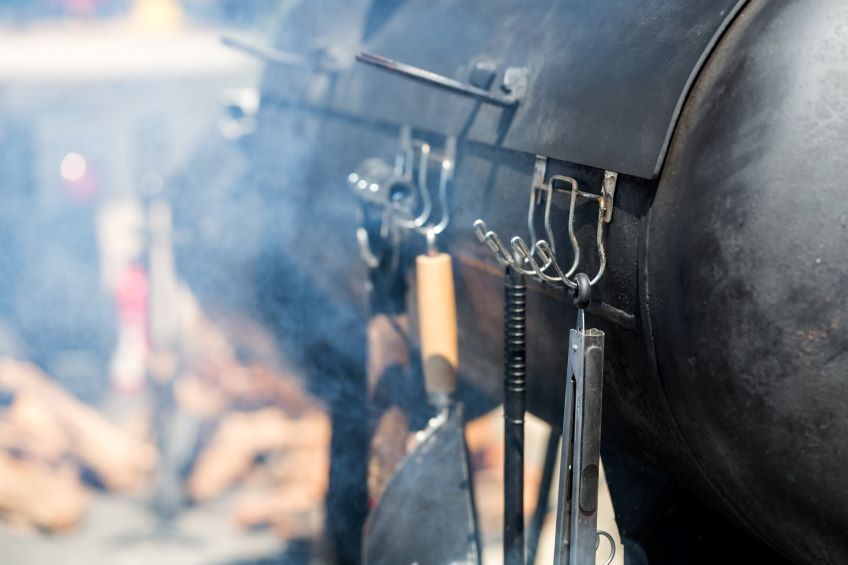
The choice between kettle and barrel grills can be influenced by the user’s experience level and the environment where the grill will be used.
Each grill type suits different needs based on user preference, location constraints, and fuel type.
For Beginners and Pros
Kettle grills are often recommended for beginners due to their simple design and ease of use.
They offer a straightforward approach to charcoal grilling, making them ideal for those new to outdoor cooking.
Kettle grills are also relatively portable, a benefit for users who need flexibility in their setup.
Professionals, on the other hand, might lean towards barrel grills, which offer more cooking space and control.
Barrel grills are suited for users who are familiar with managing larger cooking zones and can handle various types of fuel, including both charcoal and gas.
Their versatility makes them a favorite among experienced grillers looking to explore diverse grilling techniques.
Urban and Rural Settings
For urban settings, kettle grills are a practical solution due to their compact size and portability.
These grills can fit on patios or smaller outdoor spaces common in city environments.
Their design helps minimize smoke output, a benefit in close-proximity living areas.
In rural settings, with more space available, barrel grills can shine.
Their larger size and enhanced cooking capabilities cater to broader culinary endeavors.
Rural areas often accommodate the space required for these larger grills, making them suitable for outdoor kitchens or large backyard gatherings.
This environment supports the use of both charcoal and gas grills, allowing for more extensive grilling sessions.
Accessory Integration
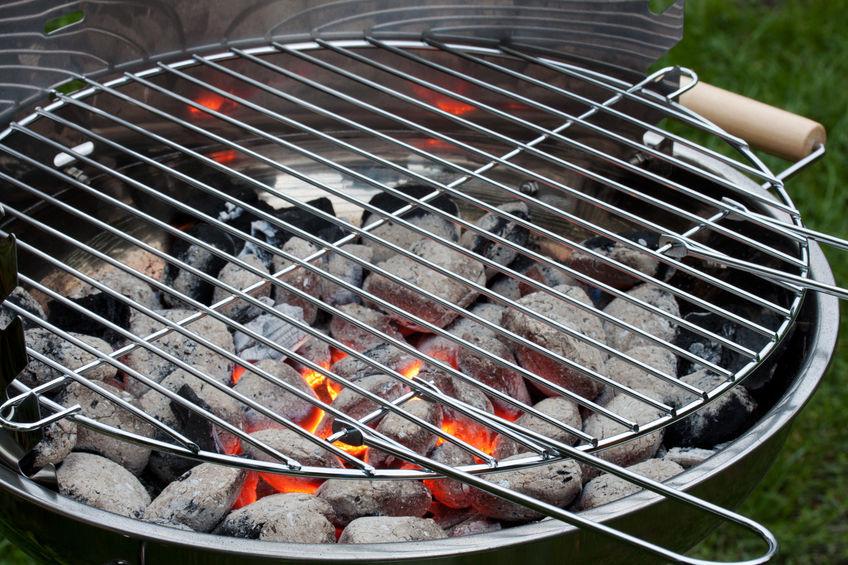
Choosing between a kettle grill and a barrel grill often involves considering the types and benefits of additional accessories.
Each type of grill integrates with accessories in unique ways that can significantly enhance the cooking experience.
Additional Tools for Kettle Grills
Kettle grills accommodate several unique accessories that can elevate grilling.
Smoker boxes are particularly popular, allowing users to infuse smoky flavors into their food, enhancing the overall taste.
These boxes fit snugly within the grill, making them an easy addition.
Temperature gauges are another essential tool.
Many kettle grills do not come with built-in gauges, making this accessory invaluable for precise temperature control.
Installing a gauge can prevent over or under-cooking, ensuring perfect results every time.
Cast iron grates are a notable enhancement to kettle grills.
They retain heat efficiently and impart desirable grill marks on food, appealing to both aesthetics and taste.
These grates also increase the durability of the cooking surface, making them a worthwhile investment.
Enhancements for Barrel Grills
Barrel grills, known for their versatility, can be complemented by a range of accessories.
A smoker box is a key tool for these grills, offering an effective way to incorporate wood chips and achieve a distinctive smoky flavor.
For those seeking to optimize cooking precision, a temperature gauge is crucial.
While some barrel grills come with gauges, many enthusiasts prefer aftermarket options for increased accuracy.
This addition aids in maintaining consistent heat.
Cast iron grates are also a popular upgrade for barrel grills.
These grates ensure even heat distribution and allow for excellent searing of meats and vegetables.
Their sturdy construction reduces wear and tear, extending the life of the grill.
Cleaning and Upkeep

When choosing between a kettle grill and a barrel grill, maintaining cleanliness is an important factor.
Kettle grills typically offer ease in cleaning due to their compact design.
Removable ash trays in many models provide a straightforward way to dispose of ash and debris.
For barrel grills, cleanup may require more time due to their larger size and extra features.
Maintenance often involves scrubbing grates and cleaning interior surfaces.
It’s essential to check for rust and consider weather-resistant covers for protection.
Both grill types require regular maintenance checks.
It’s advised to clean the grills after each use to ensure longevity.
Keeping the grills in peak condition ensures better performance and food safety.
Regular seasoning of cast iron grates on both models can prevent rust and improve cooking results.
Consider using a wire brush to clean grates while they are still warm.
This method is effective in removing stuck-on food particles.
Ash cleanup is simpler in kettle grills due to their design, while barrel grills may require more steps.
The Best Barrel and Kettle Grills to Consider
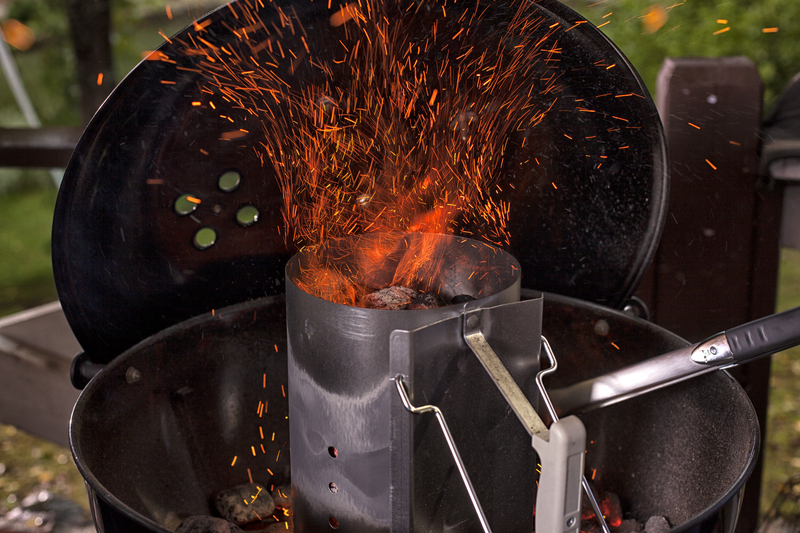
Start comparing grills today to find the perfect one for your needs.
 The Weber Original Kettle Premium is the original kettle grill.
The Weber Original Kettle Premium is the original kettle grill.
If you could only use one grill for the rest of your life, this model would be a good choice.
It’s affordable, easy to use, made from high-quality materials, and provides excellent flavor.
The shape is convenient for backyard cooking, and you can cook away from direct heat when you need to keep large cuts cooking for longer.
 If you want something more modern to suit your home, you could consider the Weber Performer Charcoal Grill.
If you want something more modern to suit your home, you could consider the Weber Performer Charcoal Grill.
This follows the same basic design principles as the original kettle but features better materials and an improved ash collection system.
It also includes an integrated preparation cart for added convenience.
Even with the jump in price, this model remains competitive with gas grills that have less usable cooking space.
 If you want to grill and smoke or make BBQ with a barrel grill, the Char-Griller Outlaw is a great starting point.
If you want to grill and smoke or make BBQ with a barrel grill, the Char-Griller Outlaw is a great starting point.
The 950-square-inch cooking area will keep you prepared no matter the ingredients or the number of guests that will show up.
While it’s not quite as nice looking or as easy to clean as a Weber, you’ll still get a lot of value from this huge outdoor cooking station.
 If you want to cook with an offset smoker, the Char-Broil Offset Smoker Grill is a great choice.
If you want to cook with an offset smoker, the Char-Broil Offset Smoker Grill is a great choice.
It’s incredibly simple and affordable and is perfect for those low-and-slow sessions where you want to create maximum flavor over several hours.
There are ultra-premium options available for barrel grills.
 If you want a large cooking area and the ease of a pellet hopper, the Weber SmokeFire Wood Fired Pellet Grill is an excellent choice.
If you want a large cooking area and the ease of a pellet hopper, the Weber SmokeFire Wood Fired Pellet Grill is an excellent choice.
